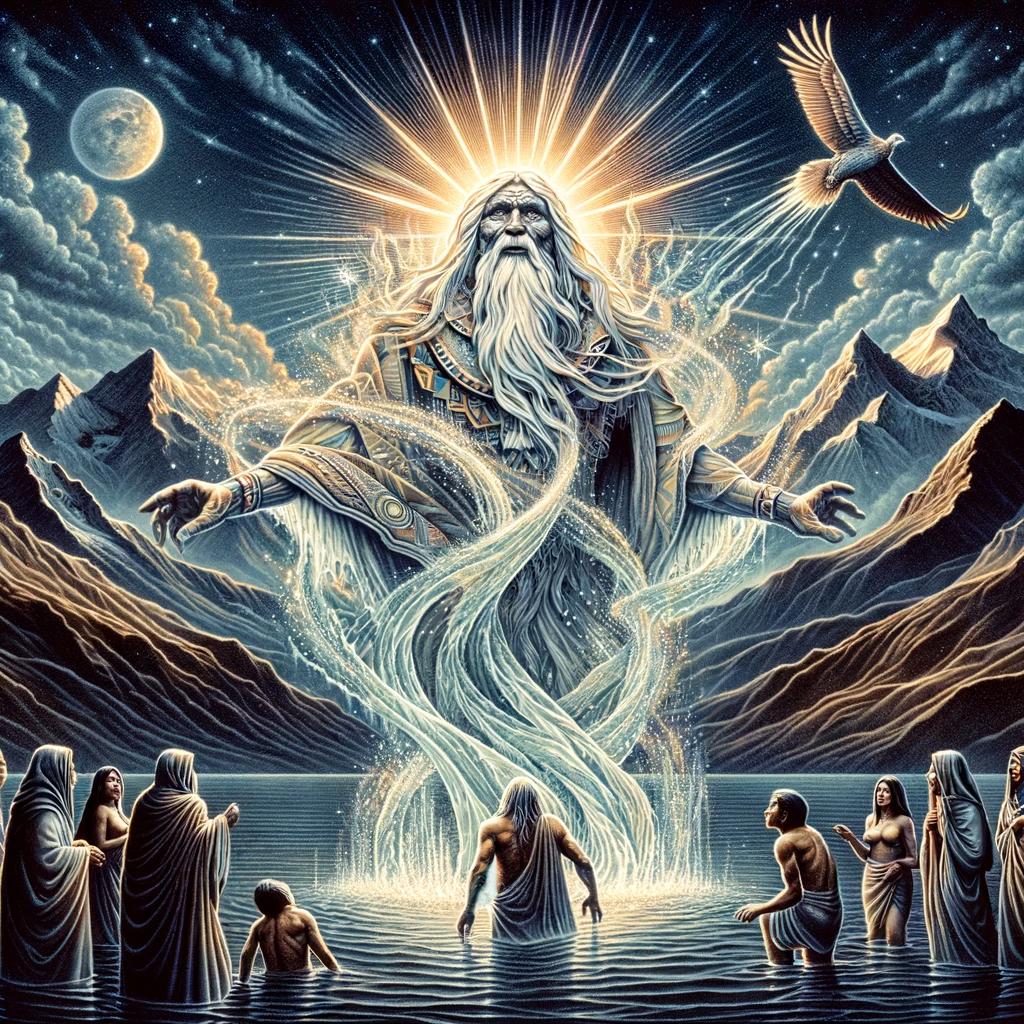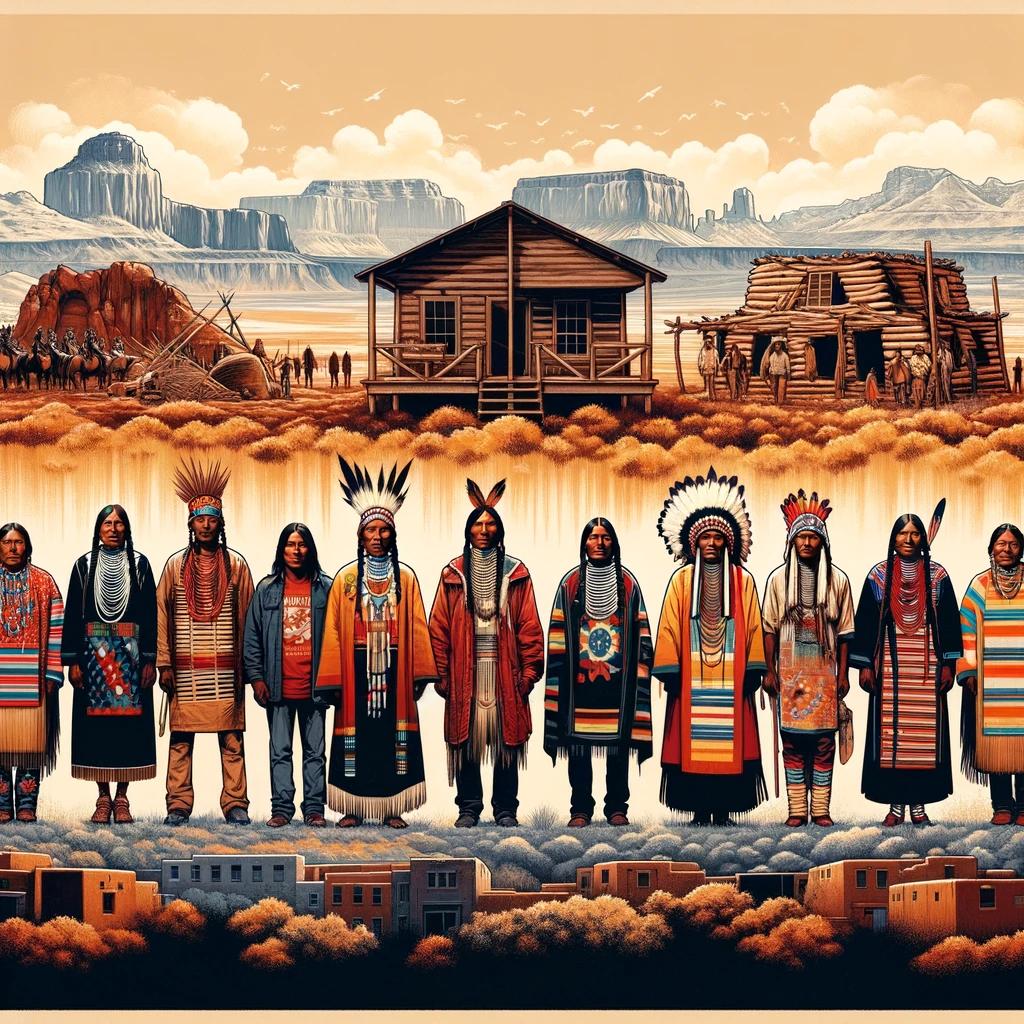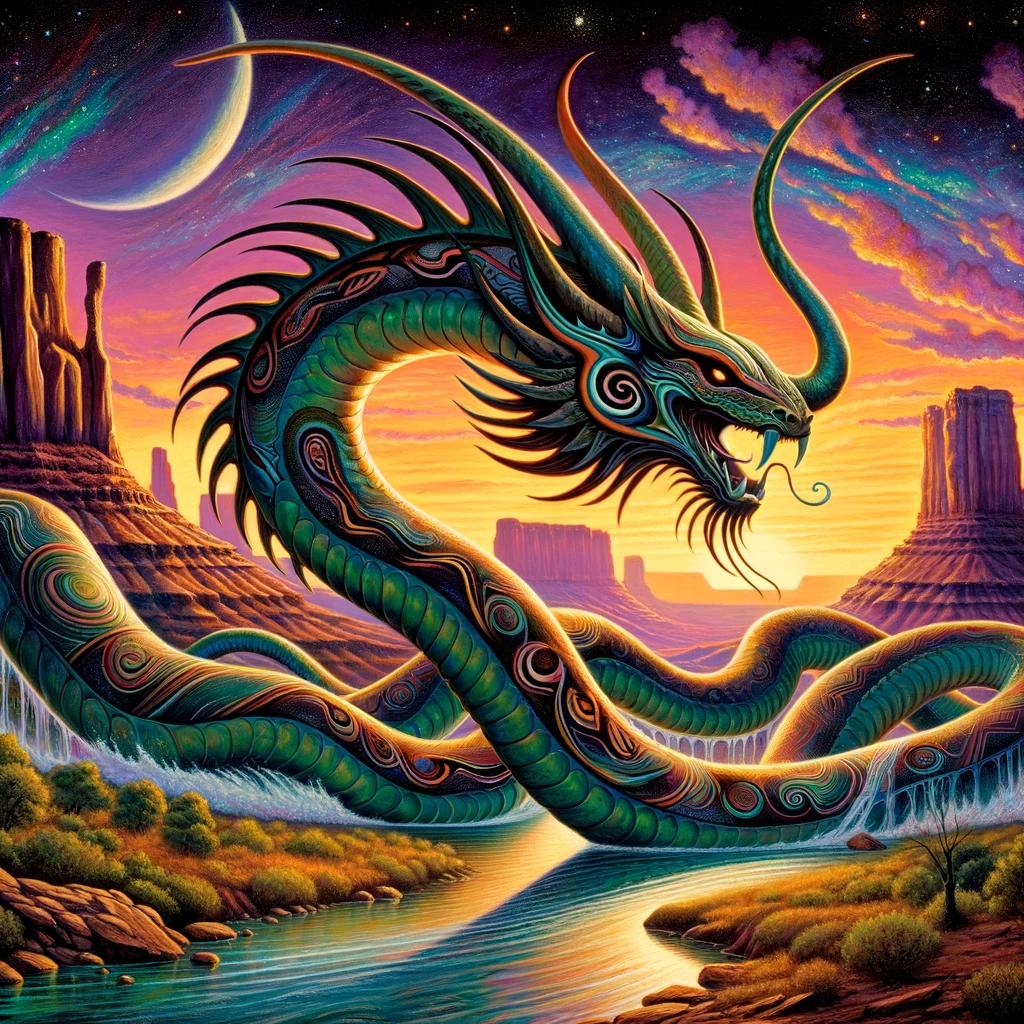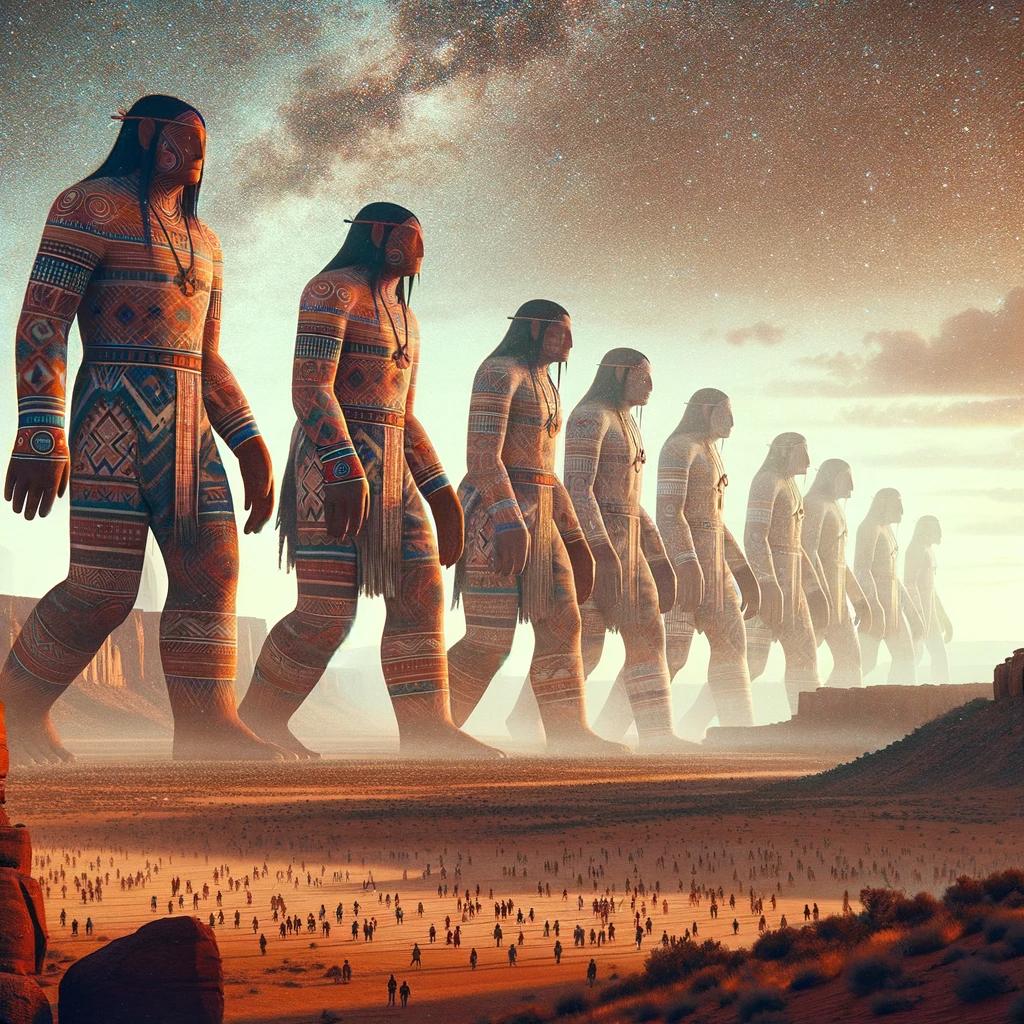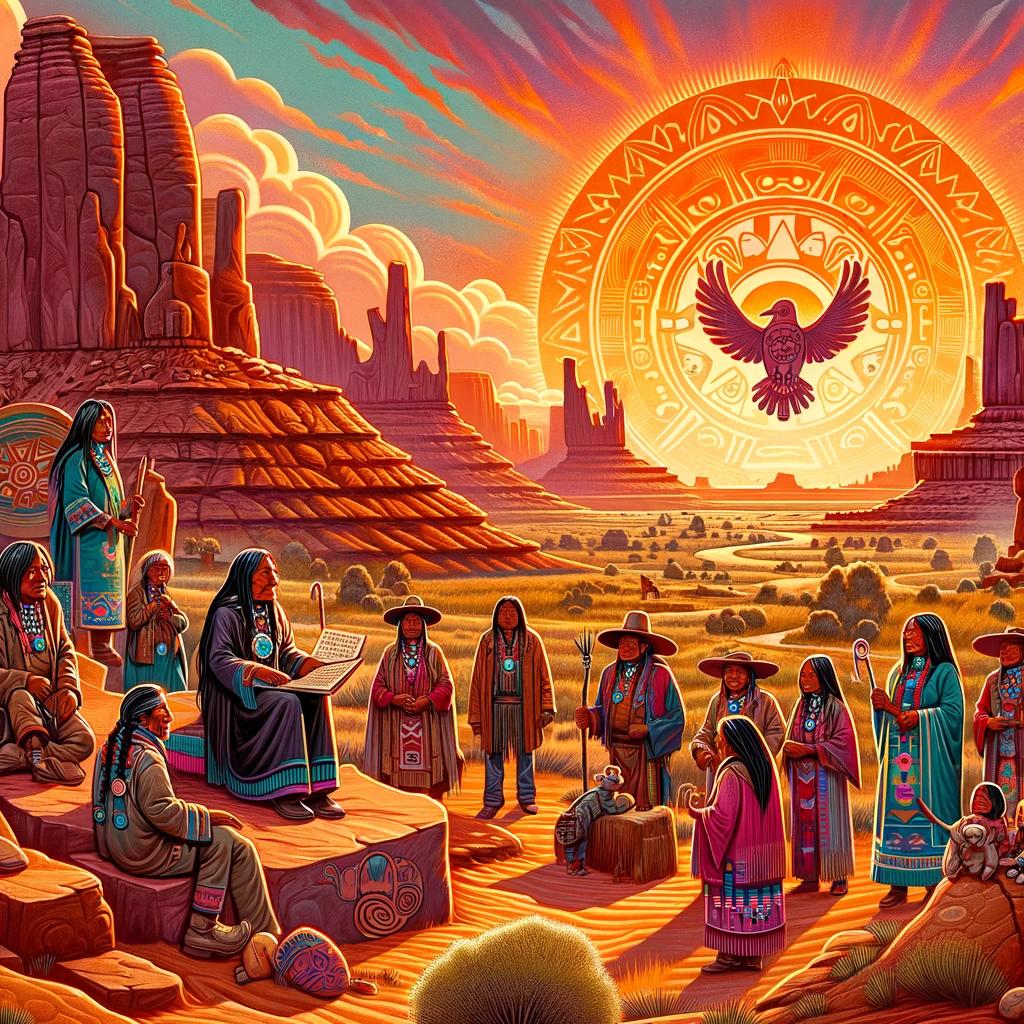‘Creation Myths of the Inca: Exploring the Origins of the Incan Civilization in the United States’
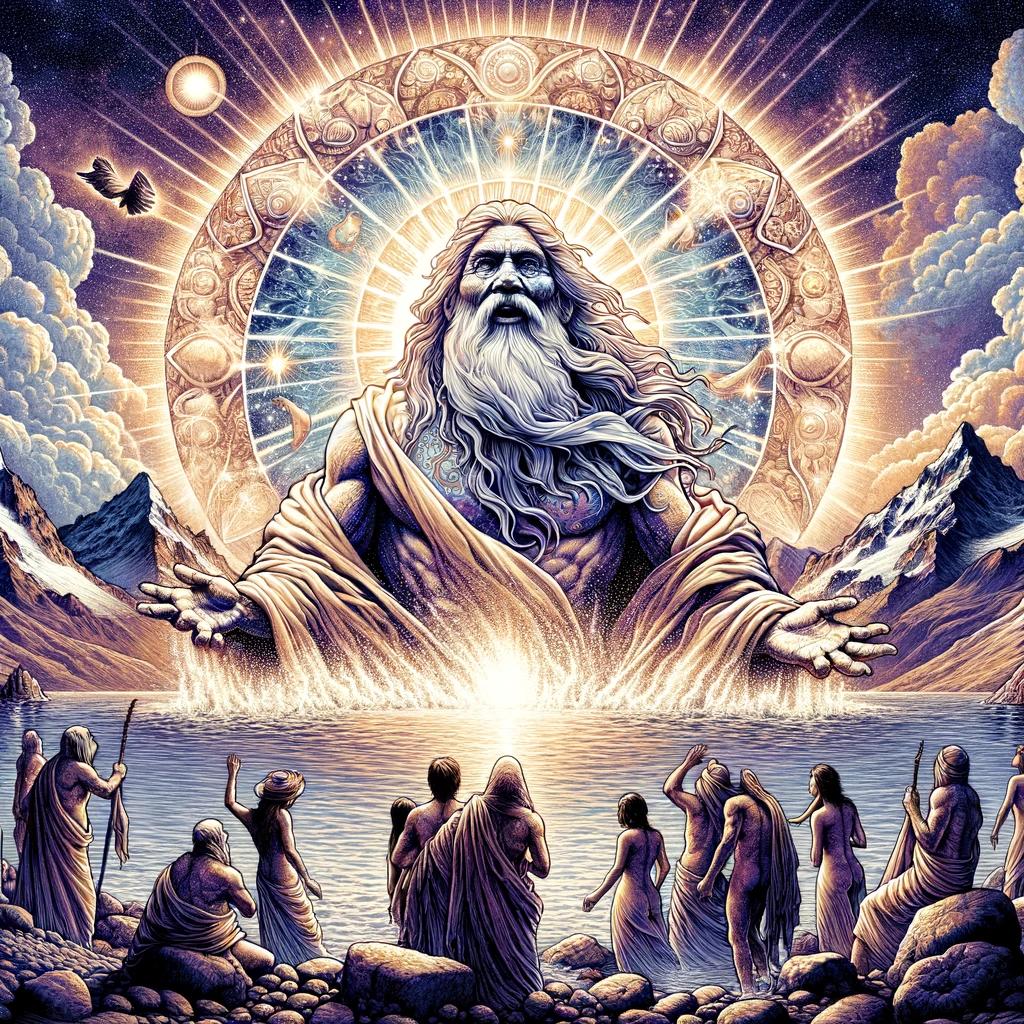
Creation Myths of the Inca explore the origins of the Incan civilization. The myth of Manco Capac and Mama Ocllo tells of their emergence from Lake Titicaca and the founding of Cusco.
The legend of the Ayar Brothers explains Ayar Manco’s establishment of Cusco after a great flood. These myths have a connection with Lake Titicaca, influencing Inca cosmology and philosophy.
The importance of the Quechua language in preserving Inca mythology is significant, passed down through oral tradition. Spanish chronicles document the creation myths, though biases exist. Today, Lake Titicaca faces environmental challenges, while Inca cultural heritage remains preserved.
The Myth of Manco Capac and Mama Ocllo
The Myth of Manco Capac and Mama Ocllo is a significant tale in Inca mythology, highlighting the origins of the Incan civilization. According to this legend, Manco Capac and Mama Ocllo were sent by the sun god Inti to bring order and civilization to humanity.
They emerged from the depths of Lake Titicaca, a sacred site in the Andes, symbolizing the divine connection between the Inca and the natural world.
Emergence from Lake Titicaca
The myth describes the extraordinary emergence of Manco Capac and Mama Ocllo from the waters of Lake Titicaca. This sacred lake, located between Bolivia and Peru, holds profound spiritual significance for the Inca.
The myth emphasizes the divine birth of these legendary figures as they emerged onto the shores of the lake, destined to become the founders of the Inca civilization.
Founding of Cusco
Once emerged from Lake Titicaca, Manco Capac and Mama Ocllo journeyed to the valley below and established the city of Cusco.
The founding of Cusco marked the beginning of the Inca empire, as Manco Capac became its first ruler. This myth served to validate the authority and divine origins of the Inca rulers, emphasizing their connection to Lake Titicaca and their sacred role in shaping the Inca civilization.
The Legend of the Ayar Brothers
The Legend of the Ayar Brothers is a significant creation myth in Incan culture that tells the story of Ayar Manco and his siblings. This myth recounts the great flood that devastated the land and how Ayar Manco emerged as a leader to establish the city of Cusco.
Ayar Manco and the Great Flood
In the myth, Ayar Manco was one of the four Ayar brothers, sons of Inti, the Sun God. When a disastrous flood engulfed the world, the brothers sought refuge in a cave on a mountain called Tampu-Tocco.
Ayar Manco, the strongest and bravest of the brothers, was chosen by the gods to lead the people and bring order to the chaos caused by the flood. He was given a golden staff that would indicate the place where he should establish his capital city.
During their journey, the Ayar brothers faced trials and challenges set by the gods. Ayar Manco, the last remaining brother, successfully overcame these obstacles and arrived at an area near Lake Titicaca.
Here, the golden staff plunged into the ground, signifying the divine location for the future city of Cusco.
Establishment of Cusco
Following the guidance of the gods, Ayar Manco and his sister-wife Mama Ocllo built the city of Cusco, which would become the capital of the Inca Empire. They taught the people the principles of civilization, agriculture, and social organization, laying the foundation for the Incan civilization.
The establishment of Cusco marked the beginning of the Inca’s rise to power and their eventual domination over a vast empire. The city became the heart of their culture and the center of political, economic, and religious activities.
The legacy of Ayar Manco and the creation of Cusco remains integral to Inca mythology and serves as a testament to their origin and the importance of Lake Titicaca in their cosmology.
While the Incas had a complex system of oral tradition to preserve their myths, the documentation of these creation myths by Spanish chronicles after the conquest provides valuable insights, albeit influenced by the biases and cultural impositions of the time.
In recent years, Lake Titicaca has faced environmental challenges, posing a threat to its cultural and natural significance. Efforts are underway to address the conservation concerns and preserve the Inca cultural heritage linked to this mythical site.
Connection between Inca Creation Myths and Lake Titicaca
The Creation Myths of the Inca are intrinsically linked to the sacred Lake Titicaca. This majestic body of water holds profound beliefs and symbols within Inca mythology and influences their cosmology and philosophy.
Beliefs and Symbols Associated with the Lake
Lake Titicaca, situated in the Andes between Bolivia and Peru, is revered as a sacred place by the Inca civilization. They believed that the lake was the birthplace of their first rulers and held a deep spiritual connection to the divine.
Within Inca creation myths, the lake is seen as a primordial source of life and fertility. Its vastness and nurturing qualities symbolize the abundance of the natural world. The Inca worshiped the lake through rituals, offerings, and ceremonies, honoring its power and significance.
Furthermore, Lake Titicaca is associated with the divine feminine in Inca mythology. It is believed to be the home of Mama Cocha, the goddess of the sea and protector of water resources.
The presence of this goddess exemplifies the reverence and respect given to the lake as a sacred entity.
Influence on Inca Cosmology and Philosophy
The creation myths revolving around Lake Titicaca played a pivotal role in shaping Inca cosmology and philosophical outlook. The Inca believed that their ancestors emerged from the depths of the lake, giving birth to their civilization and establishing their capital city, Cusco.
This connection to Lake Titicaca influenced the Inca’s perception of the world and their place within it. They regarded the lake as a source of wisdom and spiritual guidance, a mirror of the cosmos reflecting the divine order.
The vastness of the lake’s waters represented the interconnectedness of all living beings and the harmony that existed within the natural world.
The Inca’s close association with Lake Titicaca fostered a deep appreciation for nature and the environment.
It instilled in them a profound sense of stewardship, resulting in their sustainable agricultural practices and reverence for Mother Earth.
- The lake served as a spiritual pilgrimage site, attracting believers seeking enlightenment and divine connection.
- Inca rituals and ceremonies were performed on the shores of the lake, paying homage to their ancestors and the gods.
- The Inca believed that the lake had the power to cleanse and purify their souls, allowing them to achieve spiritual transformation.
- Through their myths and rituals, the Inca sought to maintain a harmonious relationship with the natural world, acknowledging their interconnectedness with the lake and the broader cosmos.
The profound influence of Lake Titicaca on Inca cosmology and philosophy is a testament to the significance of this sacred body of water within their culture.
The Importance of Quechua Language in Preserving Inca Mythology
The Quechua language played a crucial role in the preservation of Inca mythology, serving as a medium through which the creation myths were transmitted across generations. Through the oral tradition, the Quechua-speaking people have safeguarded the rich cultural heritage of the Incas, including their creation myths.
Role of Oral Tradition in Transmitting Myths
Within Quechua communities, the oral tradition holds immense significance in preserving historical narratives and mythology. The transmission of Inca creation myths relied heavily on the spoken word, with elders passing down the stories to younger generations.
Through the oral tradition, the intricate details and symbolic meanings of the creation myths were carefully woven into the fabric of Quechua society. This transmission ensured the longevity of Inca mythology and the continued understanding of their cultural identity.
Cultural Significance of Quechua
Quechua, a language still spoken in the region, is deeply intertwined with the cultural identity of the Inca civilization. It serves as a vehicle for not only preserving the myths but also for connecting present-day communities with their ancestral past.
The continued usage of Quechua language fosters a sense of pride and belonging among the Quechua-speaking population. It allows them to maintain a direct link to their cultural roots, enabling the transmission of Inca creation myths as an integral part of their collective memory and cultural heritage.
Furthermore, Quechua serves as a testament to the resilience and endurance of indigenous cultures in the face of colonization and cultural assimilation. Its preservation and promotion contribute to the acknowledgement and celebration of the diverse linguistic and cultural tapestry that shapes the United States today.
Documentation and Interpretation of Inca Creation Myths
In the exploration of Inca creation myths, documentation and interpretation play a crucial role in understanding the cultural significance of these narratives. The documentation of these myths began with the arrival of Spanish conquerors, who sought to understand and suppress the indigenous beliefs.
However, it is important to note that the Spanish chroniclers were influenced by their biases and the imposition of Christianity during that time.
Spanish Chronicles and Imposed Biases
The Spanish chroniclers who documented Inca creation myths brought along their own perspectives and beliefs, which inevitably influenced their interpretations.
As they attempted to assimilate and understand the indigenous cultures, their accounts often presented a distorted lens through which the myths were portrayed. The conversion efforts to Christianity also played a role in the reinterpretation and reinterpretation of the Inca cosmology.
Contemporary Research and Insights
In recent years, contemporary scholars and researchers have undertaken extensive studies to reevaluate and reinterpret the Inca creation myths. Through a more objective and culturally sensitive approach, these scholars aim to uncover the true essence and symbolism embedded within these ancient narratives.
Contemporary research provides fresh insights into the cosmological beliefs, societal structures, and ideological foundations of the Inca civilization.
Modern interpretations of Inca creation myths shed light on the underlying connections between the myths and the natural world. These studies analyze the deep-rooted relationship between the Inca civilization and Lake Titicaca, exploring how the myths reflect the Inca’s reverence for this sacred body of water and its role in their creation stories.
Additionally, contemporary research seeks to elucidate the spiritual significance of the Quechua language in preserving the oral traditions and mythological heritage of the Inca people.
By critically analyzing the Spanish chronicles and incorporating contemporary research, we can gain a more comprehensive understanding of the Inca creation myths.
These ongoing efforts contribute to the preservation and appreciation of the Inca cultural heritage, while also emphasizing the need to consider multiple perspectives and avoid an exclusively Eurocentric lens in interpreting these ancient narratives.
Current Challenges and Conservation Efforts
As we delve into the creation myths of the Inca civilization, it is crucial to understand the current challenges faced by Lake Titicaca and the conservation efforts aimed at preserving the Inca cultural heritage.
Environmental Concerns for Lake Titicaca
The pristine beauty of Lake Titicaca is under threat as environmental concerns loom over its waters. The diminishing level of the lake, attributed to shorter rainy seasons and melting glaciers, has raised alarms.
This decline poses a significant risk to the ecosystem as it impacts the availability of water and disrupts the delicate balance of aquatic life.
The contamination of Lake Titicaca’s water due to the rapid urban growth in the surrounding basin further exacerbates the environmental challenges.
The escalating population strains the existing waste management infrastructure, leading to inadequate disposal of solid waste and untreated sewage. As a result, pollutants find their way into the lake, endangering the health of both aquatic species and human communities.
Preservation of Inca Cultural Heritage
The rapid changes in the region, coupled with the environmental threats to Lake Titicaca, pose challenges to the preservation of the Inca cultural heritage. Efforts are underway to safeguard the rich history and mythology associated with the lake and its creation myths.
The Inca’s oral tradition, passed down through generations, plays a crucial role in preserving their mythology. Initiatives are in place to document and protect the Quechua language, a fundamental part of the Inca culture, to ensure the continued transmission of their creation myths for future generations.
Conservation organizations and local communities are actively working towards protecting the archaeological sites and sacred locations around Lake Titicaca. By designating these areas as protected sites, efforts aim to mitigate the impact of urban growth, tourism, and potential looting or vandalism, safeguarding the tangible and intangible cultural heritage of the Inca civilization.
The collaboration between local communities, government agencies, and international organizations has resulted in ongoing projects for sustainable development and environmental conservation. Support is provided to implement proper waste management systems, promote eco-friendly practices, and raise awareness about the importance of preserving the Inca cultural heritage and the unique ecological features of Lake Titicaca.
- Preservation of archaeological sites and sacred locations
- Protection of tangible and intangible cultural heritage
- Sustainable development and environmental conservation
- Eco-friendly practices and waste management initiatives
- Education and awareness campaigns
Through these combined efforts, there is hope that the Inca cultural heritage will continue to thrive, and the beauty and significance of Lake Titicaca will be preserved for generations to come.
Legacy of Creation Myths in Inca Culture
The creation myths of the Inca civilization hold immense significance in their culture, shaping their worldview and providing a foundation for their beliefs and practices. These myths not only explain the origins of the Inca people but also establish their connection to the divine and the spiritual realm.
They serve as a cultural heritage that has been passed down through generations, carrying on the traditions, values, and identity of the Inca society.
The legacy of these creation myths can be seen in various aspects of Inca culture.
Rituals, ceremonies, and festivals often incorporate elements from these myths, honoring the ancestral figures and deities involved in the creation narratives. The myths also influenced the social structure and political hierarchy of the Inca empire, as the divine origins of their rulers validated their authority and legitimacy.
Furthermore, the creation myths provided the Inca people with a sense of belonging and collective identity, fostering unity and solidarity among the communities. They instilled values of respect for nature, harmony with the cosmos, and reverence for ancestral wisdom.
The perpetuation of these myths in art, storytelling, and oral traditions ensures their continued presence and appreciation in contemporary Inca culture.
Continued Relevance of Lake Titicaca in Contemporary Society
Lake Titicaca retains its relevance and significance in contemporary society, extending beyond its role in the creation myths of the Inca. The lake serves as a vital source of sustenance, providing water and livelihood to the communities residing in its vicinity.
It continues to support agriculture, fishing, and traditional trades, sustaining the cultural practices and economic activities of the local population.
Furthermore, Lake Titicaca has become a renowned tourist destination, attracting visitors from around the world who seek to explore its unique natural beauty and deep historical connections.
The lake offers opportunities for cultural exchanges, as travelers engage with the local communities, learn about their traditions, and experience their way of life.
In recent years, efforts have been made to promote sustainable tourism and conservation practices to safeguard the ecological integrity of the lake.
Conservation initiatives aim to protect the biodiversity of the area, preserve important archaeological sites, and mitigate the impact of human activities on the fragile ecosystem.
Overall, Lake Titicaca continues to hold immense cultural, ecological, and economic value in contemporary society.
It serves as a symbol of the rich history and enduring legacy of the Inca civilization, as well as an essential lifeline for the communities that have long depended on its resources.
.

